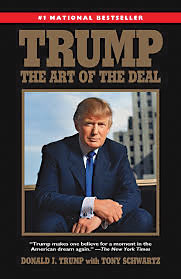As an educator and openly curious person, I have had reservation in reviewing a book written by a person who has become one of the most controversial figures in our time – either loved or despised by millions of people. But as a professor of business and the author of a manual on negotiations that is used widely on our universities. I consider this an important addition to any business person’s reading list. My first-hand experience with small constructions operations, including the permitting and approval process give me a deep knowledge for the complexity in this business. I offer my analysis of “The Art of the Deal” from this perspective.
 “The Art of the Deal” was first published in 1987 when Donald Trump was a wannabe tycoon. It provides personal insights into his construction family background, education and attitude towards work. The book frames the dealmaking within a construction company during the turbulently complicated New York City in the 1970s. A city beset with crime and heavy corruption.
“The Art of the Deal” was first published in 1987 when Donald Trump was a wannabe tycoon. It provides personal insights into his construction family background, education and attitude towards work. The book frames the dealmaking within a construction company during the turbulently complicated New York City in the 1970s. A city beset with crime and heavy corruption.
The important elements of the deal are outlined in chapter two – as follows:
- Think big
- Protect the downside and the upside will take care of itself
- Maximize your options
- Know your market
- Use your leverage
- Enhance your location
- Get the word out
- Fight back
- Deliver the goods
- Control the cost
- Have fun
These elements are woven throughout the book with actual practical stories of the circumstances of the high risk construction industry. The think-big element includes stories of a vision of owning real estate on the west side of town in the heart of Manhattan where Trump Tower is today. The reader learns that in order to maximize options it is necessary to understand what options exist. Trump’s father created the foundation of giving Trump a wide range of experiences in the industry. It included diverse task he needed to perform under tight deadlines and costs perimeters.
The two stories I found most useful for business decision makers are the ice skating rink Trump rebuilt – below cost and under completion deadline. Plus a building he took over after a competitor failed to complete it.
The skating rink story is told in Trump bravado style of city officials who mismanaged a skating rink and its repairs for years because they failed to understand the options of repairing it. Trump used experts to find options to repair it and tells the reader the necessity to the care it requires to analyze the options before proceeding.
The other story is of a competitor who does not understand building regulations or the New York City permitting process and culture. Trump simply stood by assessing the competencies of his competitor. His gut told him he would not be able to complete the project. When the competitor failed, Trump made a mutually beneficial agreement to finish the job and purchase the final project at a bargain price. The project proved to be a lucrative investment in the end.
I assess the book as a classic in entrepreneurship and recommend it to all regardless of their political leanings. It is a hands-on approach to dealmaking with an often overlooked focus on analysis on getting a full picture of the circumstances – “the way the wind is blowing.” The book points out the necessity of monitoring the time and the ups and downs of economic and political change that bring challenges or great opportunities yet to be made.
Lucia Worthington is the author of a manual on negotiations used by faculty teaching negotiation strategies. She is a professor of business and management at Clark College. She can be reached at success@lworthington.com.

